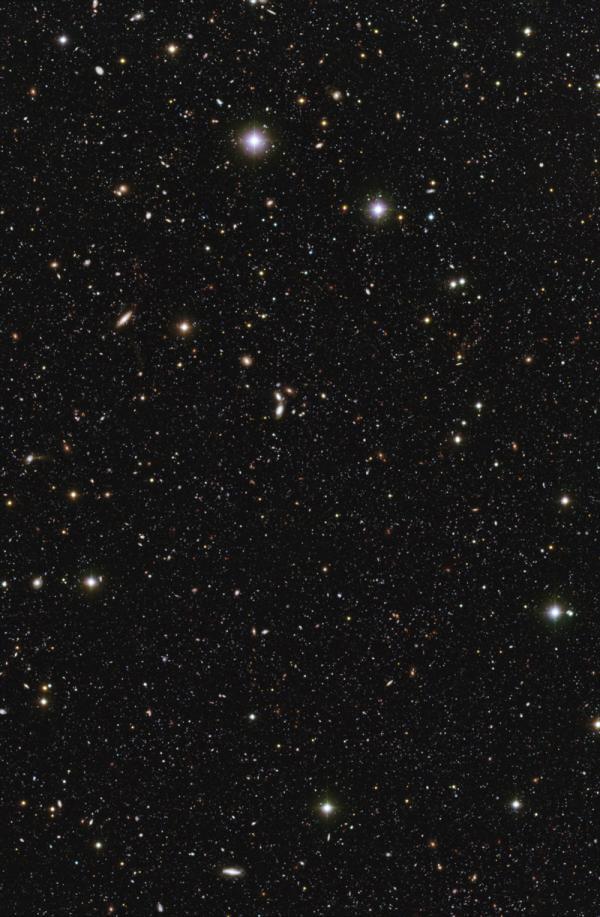This stunning image, with countless colorful galaxies, represents the Chandra Deep Field South area (CDF-S), the most observed and studied airspace in the universe.
CDF-S is one of two areas selected in the Great Observatories Origins Deep Survey (GOODS) Program, an effort by the global astronomical community to gather the deepest observations and images from ground equipment and space at every wavelength from X-rays to radio waves.
The original purpose of this program is to provide the first enough statistics on the universe to help astronomers in studying the formation and development of galaxies.
New ESO images unveiled a collection of data obtained from VIMOS devices, as well as data obtained with Wide-Field Imager (WFI) attached to MGP / ESO telescopes in La Silla, creating a basic foundation for GABODS survey.
 Chandra Deep Field South is observed by ESIM VIMOS and WFI devices. VIMOS's observation is done within 40 hours and brings the deepest image ever obtained from the ground. This image covers an area of 14.1 x 21.6 arcmin in the sky, and shows galaxies that the naked eye cannot see. The VIMOS image was performed by the ESO / GOODS research team, while the WFI image was produced by the GABODS team. (Photo: ESO / Mario Nonino, Piero Rosati and ESO GOODS group)
Chandra Deep Field South is observed by ESIM VIMOS and WFI devices. VIMOS's observation is done within 40 hours and brings the deepest image ever obtained from the ground. This image covers an area of 14.1 x 21.6 arcmin in the sky, and shows galaxies that the naked eye cannot see. The VIMOS image was performed by the ESO / GOODS research team, while the WFI image was produced by the GABODS team. (Photo: ESO / Mario Nonino, Piero Rosati and ESO GOODS group)
The newly released image - a 40-hour result of observing a region of the GOODS research group - is the deepest image ever obtained from the ground.With this depth, galaxies almost completely cover the sky, each galaxy, like our Milky Way, contains billions of stars.
Galaxies are dim to the naked eye, and there are colors that the human eye cannot directly observe. This image is the basis for exploring a large number of new galaxies that are far away, they have appeared when the universe was only 2 billion years old.
In this sea of galaxies - also known as cosmic islands - only some stars belong to the Milky Way galaxy. One of them is very close and moves very fast in the sky. This star is on the left of the second brightest star in the picture. It looks like a long-lasting rainbow, because this star moves as the data is gathered for years.
 Van Allen's belt and evidence that the Apollo 11 mission to the Moon was myth
Van Allen's belt and evidence that the Apollo 11 mission to the Moon was myth The levels of civilization in the universe (Kardashev scale)
The levels of civilization in the universe (Kardashev scale) Today Mars, the sun and the Earth are aligned
Today Mars, the sun and the Earth are aligned The Amazon owner announced a secret plan to build a space base for thousands of people
The Amazon owner announced a secret plan to build a space base for thousands of people